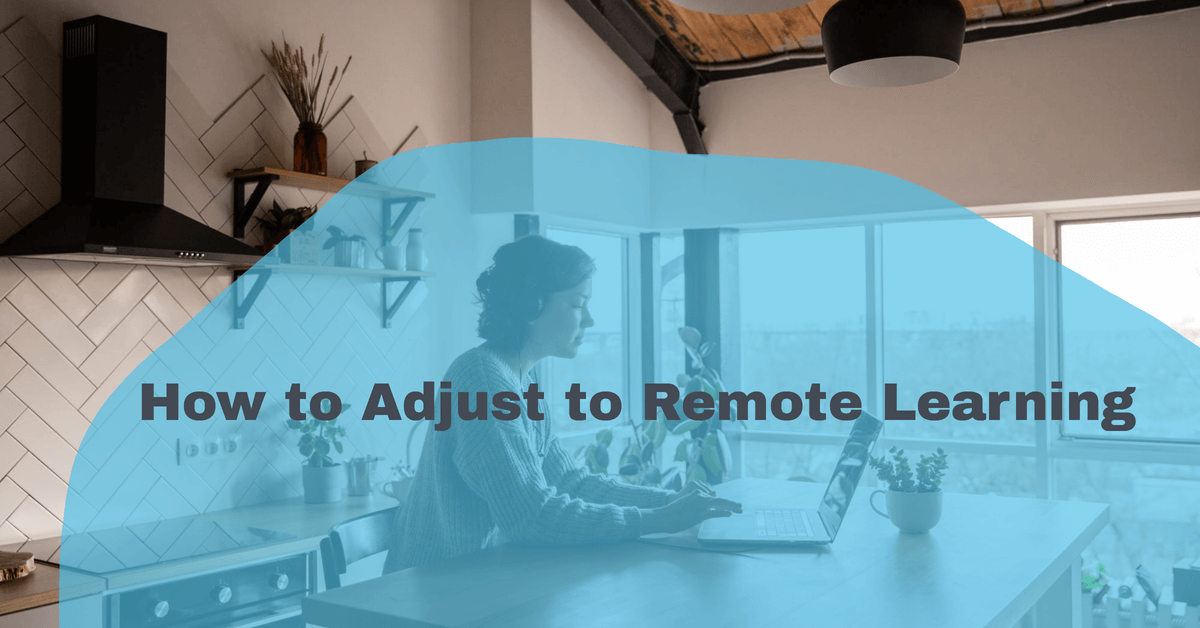How to Adjust to Remote Learning
 Have your classes moved online? The COVID-19 pandemic has forced many students to transition to remote lectures. This switch may seem simple, but it’s not always easy for students to adjust immediately.If you’ve struggled with your virtual courses, it’s time to implement a few tricks. As a result, you’ll be as successful as possible.
Have your classes moved online? The COVID-19 pandemic has forced many students to transition to remote lectures. This switch may seem simple, but it’s not always easy for students to adjust immediately.If you’ve struggled with your virtual courses, it’s time to implement a few tricks. As a result, you’ll be as successful as possible.
Here’s a look at how to adjust to remote learning.
1. Create a Designated Workspace
It’s crucial to set aside a dedicated space where you can complete work. This area doesn’t need to be fancy. You can use your kitchen countertop, coffee table or any other flat surface. Avoid studying in your bedroom, if possible. It’s sometimes helpful to be able to figuratively “shut a door” on your school day when your last class ends.
You should also consider other environmental components, like lighting and seating. You want to ensure your workspace feels comfortable for hours of online lectures. Feel free to add pictures and trinkets to make your workspace look better, too. In any case, you want to create a designated area so you can focus.
2. Talk With Professors and Advisers
Your professors and advisers are still there to help when needed. They can provide remote learning strategies for students that may make your experience better. If you find that you’re having trouble, you shouldn’t hesitate to contact them. They’ll be able to work with you to see how you can take steps to adapt. It’s also smart to talk to them about problems you’re facing with homework and tests.
The faculty and administrators at your university know that online learning isn’t a great fit for every student. Therefore, they’ll be in a position to help you.
3. Follow Lists or Calendars
A to-do list or homework calendar can help you manage your course load better. Your university may have a website where your professors assign homework, but it’s often best to be more organized. Try to write down each task you have every Monday. Then, you can physically cross them off as you complete them. As a result, you should feel more in control of your weekly to-dos.
It can be a bit tricky not to have in-person classes to keep you accountable, which is why calendars are a good idea. As long as you remember to update your tasks, you’ll be able to transition to online learning without many hiccups. Time-tracking can also help you stick to the designated windows of time you’ve scheduled out for certain tasks, keeping you more accountable and productive.
4. Be an Accountable Classmate
It becomes harder for students to connect with each other when they’re online. If you can’t meet up for a group project in person, you have to find online alternatives to ensure everyone does their part. You can set an example by staying on top of any group work you need to complete. Use resources like Google Docs, Slack, Zoom and more so you can hold each other accountable.
5. Try Not to Multitask
When it comes to tips for remote learning, you should try to keep your school days stress-free. You don’t want to bog yourself down with so many responsibilities that you become overwhelmed. It helps to map out specific times when you’ll only focus on school. Take a look at your schedule to determine when you should study versus when you should have free time.
It’s also essential to stay off your phone and other devices during class. That’s easier said than done, but it’s impossible to multitask effectively even if you think you can. Your class performance will likely suffer if you aren’t responsible.
Use These Tips for Online Learning This Year
If you’re struggling with remote learning, you’re not alone. This transition has been a challenge for students everywhere. Fortunately, you can use these tips to make your school days more manageable — no matter where you’re learning from.
About the Author
 Ginger Abbot is a freelance writer, Editor-in-Chief and founder of Classrooms, an online learning magazine for students, graduates and educators.
Ginger Abbot is a freelance writer, Editor-in-Chief and founder of Classrooms, an online learning magazine for students, graduates and educators.

